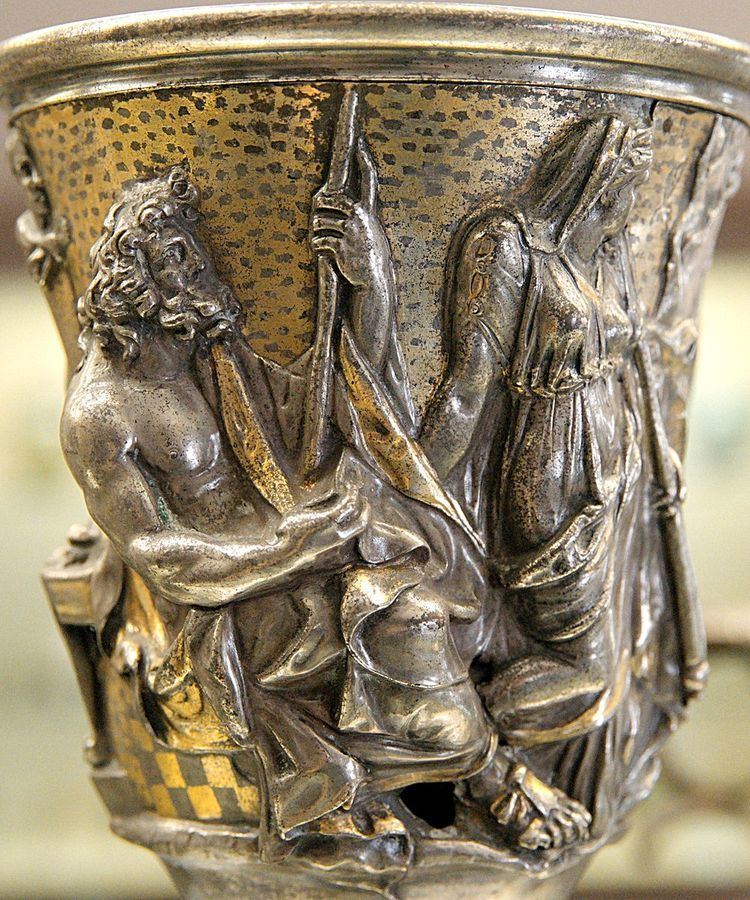 | ||
The Berthouville treasure is a hoard of Roman silver uncovered by ploughing in March 1830 at the hamlet of Villeret in the commune of Berthouville in the Eure département of Normandy, northern France. Purchased at the time of discovery for a modest 15,000 francs, the treasure is conserved in the Cabinet des Médailles at the Bibliothèque nationale, Paris.
Contents
Discovery
The Berthouville hoard was discovered when a ploughshare struck a Roman tile. Once dislodged, the tile uncovered the hastily buried temple treasure a mere 20 cm beneath the modern surface.
The treasure belonged to a sanctuary of Mercury Canetonensis. In the mid 1st century BCE, Julius Caesar had identified Mercury as one of the main deities of Gaul. In his Gallo-Roman form Mercury is frequently found with a Gaulish epithet.
The treasure
The treasure consists of silver and other metalwork, of varying type, quality and dates in the 1st to late 2nd centuries of the Common Era. The trésor de Berthouville is one of only three known depositories securely associated with local religious cult in Gaul and Britannia. The hoard was hidden in the late 2nd or early 3rd century, but contained heirloom pieces like the repoussé silver jug that was made in Italy in the 1st century CE. The find totaled 93 items, some of which were dissociated handles and silver appliqués, with a total weight of 25 kg. Most of the items are bowls, cups and jugs, but there is also a phiale for libations.
There are also two silver statuettes of Mercury (the larger 60 cm tall) and a silver bust of a goddess, probably his mother Maia, perhaps representing Romanized versions of Gallic deities. The pairing of a Roman god with a Gallic goddess would be characteristic of Gallo-Roman religion.
Four of the bowls have incised emblematic designs associated with Mercury, and the formulaic Latin initialism VSLM, standing for votum solvit libens merito ("He fulfills his vow freely, as is deserved"). Nine of the vessels form a group of luxury domestic silver of 1st century date with iconographic connections to Dionysus rather than to Mercury, marked as votive offerings (vota) of one Q. Domitius Tutus; they include a matching pair of silver drinking cups (scyphi) with Dionysiac imagery of centaurs, and a pair of silver wine-jugs.
Excavations near the find-spot in 1861-62 and 1986 revealed a Gallo-Roman theatre and a shrine that may have been the shrine to which the silver objects had been dedicated.
Conservation
The Berthouville treasure is currently at the Getty Villa in Malibu, California, where it is being studied and conserved as part of collaborative multi-year project between the J. Paul Getty Museum and the Cabinet des Médailles. The restored treasure will be exhibited at the Getty Villa in 2014.
